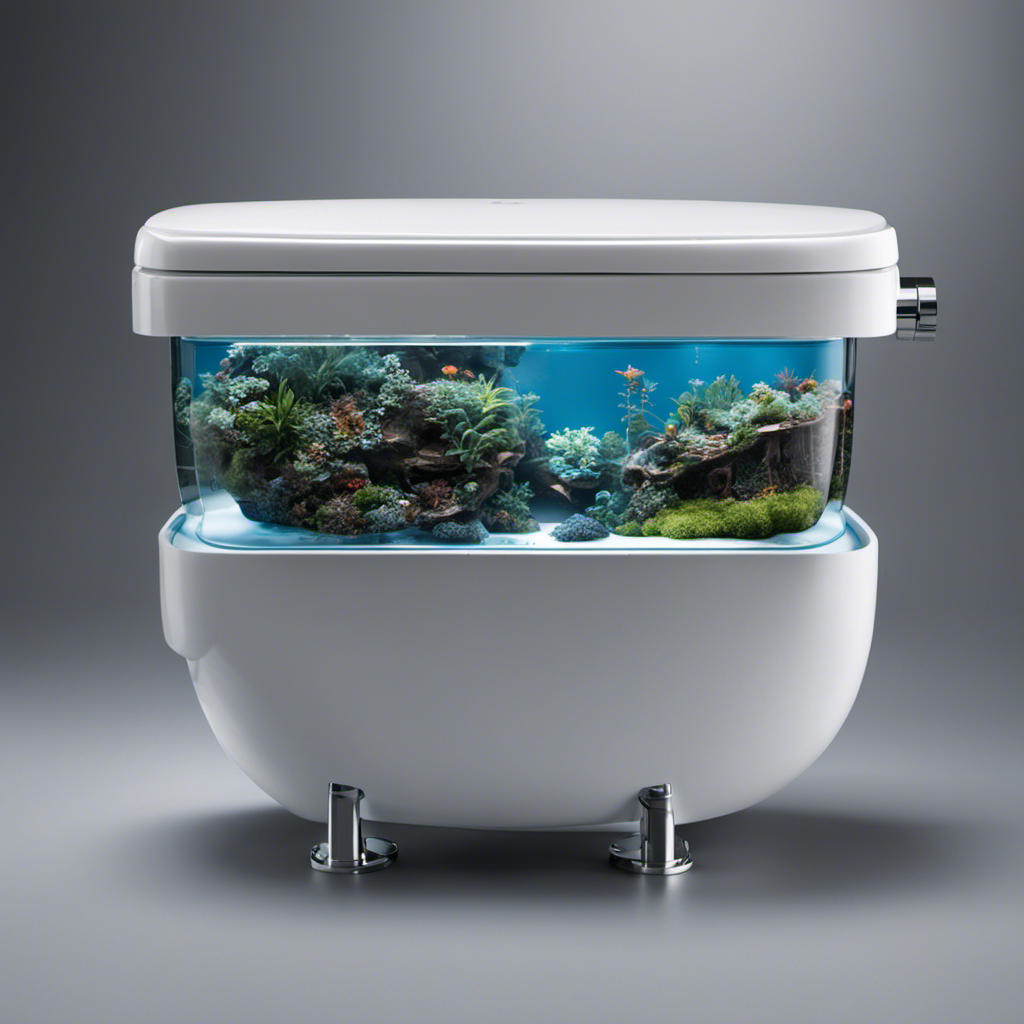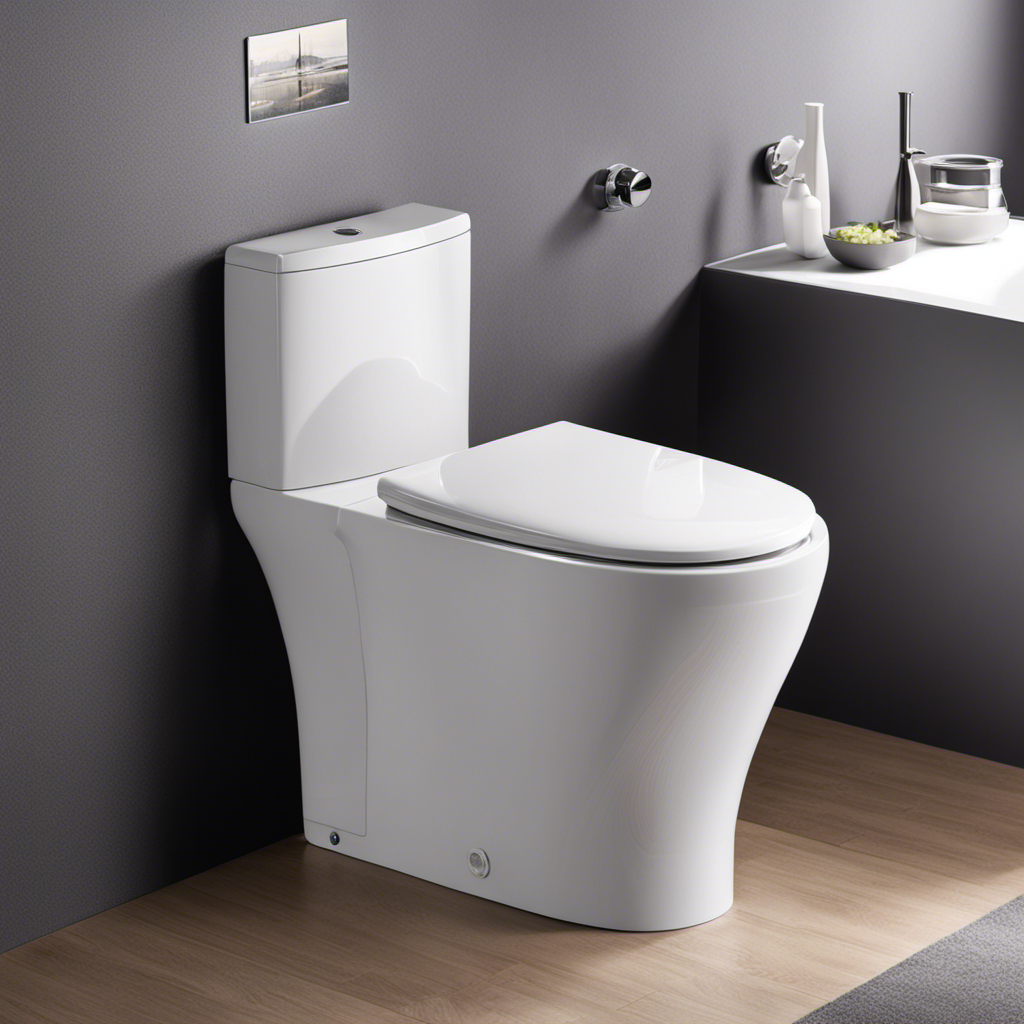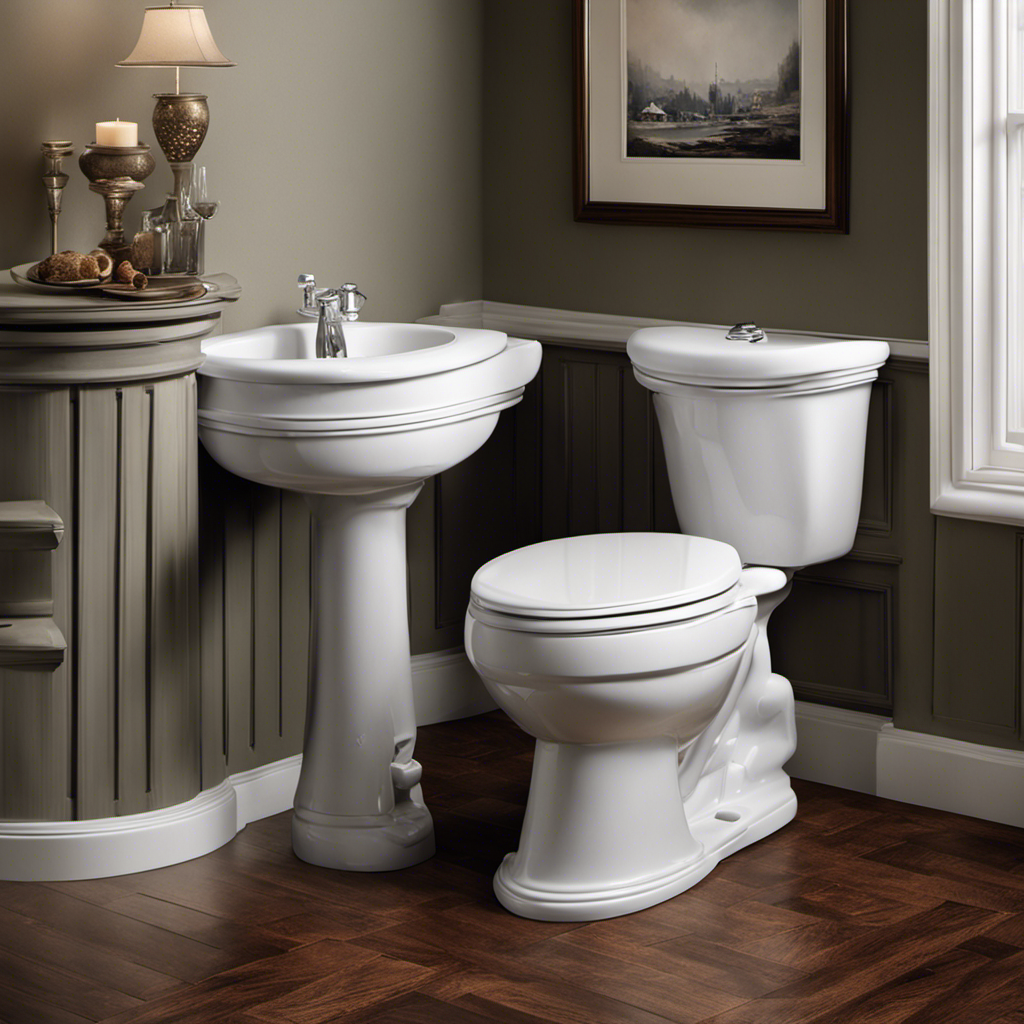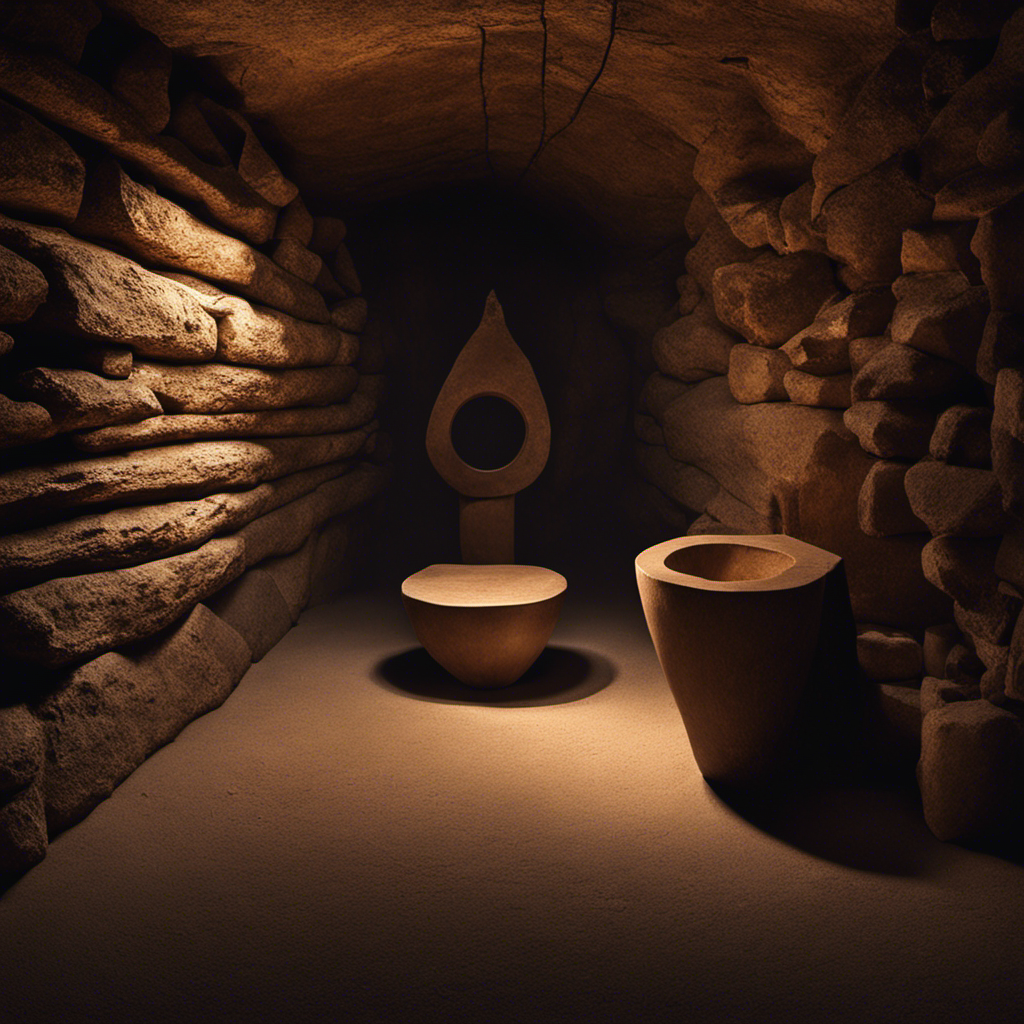Have you ever wondered why your toilet seems to never stop running? It’s like a leaky faucet that just won’t quit.
Well, I’ve got some good news for you – I’m here to help you figure out the common causes of a running toilet, how to identify if your toilet is leaking, and the steps you can take to fix it.
So, grab your wrench and let’s get to work on solving this pesky problem together.
Key Takeaways
- A faulty or worn-out flapper valve is a common cause of a running toilet.
- Leaking toilets can be identified by water pooling around the base, continuous sound of water flowing, visible cracks or leaks in the bowl or tank, and droplets falling from the tank.
- To fix a running toilet, turn off the water supply valve, locate and close the valve near the bottom of the tank, inspect and replace the flapper valve if necessary.
- To prevent a running toilet, regularly inspect the flapper valve, adjust the water level, check for leaks, clean the flapper valve, and ensure a tight seal.
Common Causes of a Running Toilet
One of the most common causes of a running toilet is a faulty flapper. The flapper is a rubber valve located in the toilet tank that controls the flow of water into the bowl. When the flapper is worn out or damaged, it fails to create a tight seal, causing water to continuously leak from the tank into the bowl.
This constant flow of water not only leads to an annoying noise but also results in a significant increase in your water bill. To check if the flapper is the culprit, simply open the tank and observe if water is continuously flowing into the bowl. If so, replacing the flapper should solve the problem and save you money on your water bill.
How to Identify a Leaking Toilet
To identify a leaking toilet, you can check for water pooling around the base or a continuous sound of water flowing. These are signs of a faulty toilet that may require toilet repair services. It’s important to address a leaking toilet promptly to prevent water damage and higher water bills. Here is a table that outlines the common signs of a leaking toilet:
| Signs of a Leaking Toilet |
|---|
| Water pooling around the base |
| Continuous sound of water flowing |
| Visible cracks or leaks in the toilet bowl or tank |
Steps to Fix a Running Toilet
You can start fixing a running toilet by turning off the water supply valve behind the toilet. To do this, simply locate the valve, which is typically located near the bottom of the toilet tank. Turn the valve clockwise until it is fully closed. This will stop the flow of water into the tank and prevent any further water waste.
Next, remove the tank lid and inspect the flapper valve. If it is worn or damaged, it may need to be replaced. Additionally, check the fill valve and adjust the water level if necessary.
Fixing a running toilet is essential not only to conserve water but also to prevent an increase in your water bill.
Tips for Preventing Toilet Running
Remember, regularly inspecting the flapper valve and adjusting the water level can help prevent unnecessary water waste and costly repairs. Here are three tips for preventing toilet running and conserving water:
-
Check for leaks: Look for any signs of water leakage around the base of the toilet or on the floor. This could indicate a faulty seal or crack, which can lead to continuous running.
-
Clean the flapper valve: Over time, mineral deposits and debris can build up on the flapper valve, causing it to not seal properly. Regularly clean the valve to ensure a tight seal and prevent water from continuously flowing into the bowl.
-
Adjust the water level: If the water level is too high, it can cause the toilet to continuously run. Adjust the float or fill valve to ensure the water level is at the appropriate height.
When to Call a Professional for a Running Toilet
If the steps mentioned earlier didn’t resolve the issue, it might be a good idea to contact a professional for assistance with your toilet. Signs of a malfunctioning toilet can include constant running, slow filling, or leaks around the base. These issues could indicate a problem with the flapper, fill valve, or other components.
Regular toilet maintenance is important to prevent these problems. This includes checking for leaks, cleaning the toilet tank, and replacing worn-out parts as needed. However, if you’ve tried troubleshooting and the problem persists, it’s time to seek professional help.
A qualified plumber will have the expertise to diagnose and fix the issue efficiently, saving you time and potential further damage to your toilet.
Frequently Asked Questions
What Are the Potential Consequences of Ignoring a Running Toilet?
Ignoring a running toilet can lead to potential health risks such as the growth of harmful bacteria and mold. It also has an environmental impact, wasting water and contributing to water scarcity issues.
How Much Water Does a Running Toilet Waste on Average?
On average, a running toilet can waste up to 200 gallons of water per day. To conserve water and save money, try DIY methods like adjusting the flapper or float valve. Remember to always fix a running toilet promptly.
Can a Running Toilet Cause Damage to the Bathroom Flooring or Walls Over Time?
A running toilet can potentially cause damage to the bathroom flooring and walls over time. If not fixed promptly, the constant water flow can lead to leaks and water seepage, requiring costly bathroom repairs.
Are There Any DIY Methods to Temporarily Stop a Running Toilet Until It Can Be Fixed Permanently?
There’s a simple fix for a running toilet. Try some temporary fixes like adjusting the water level or replacing the flapper. These troubleshooting tips should help until you can fix it permanently.
Is It Possible for a Running Toilet to Affect the Water Bill Significantly?
Yes, a running toilet can significantly impact the water bill. It’s important to detect and fix a running toilet promptly to avoid unnecessary water waste and conserve water resources.
Conclusion
So there you have it, folks! That’s why your toilet is running and how you can fix it.
I know some of you might be thinking, ‘But I don’t have the time or the skills to fix it myself.’ Well, worry not! Calling a professional plumber is always an option if you’re not comfortable doing it yourself.
Remember, a running toilet not only wastes water but also money, so it’s essential to address the issue promptly. Don’t let a running toilet drain your resources!










